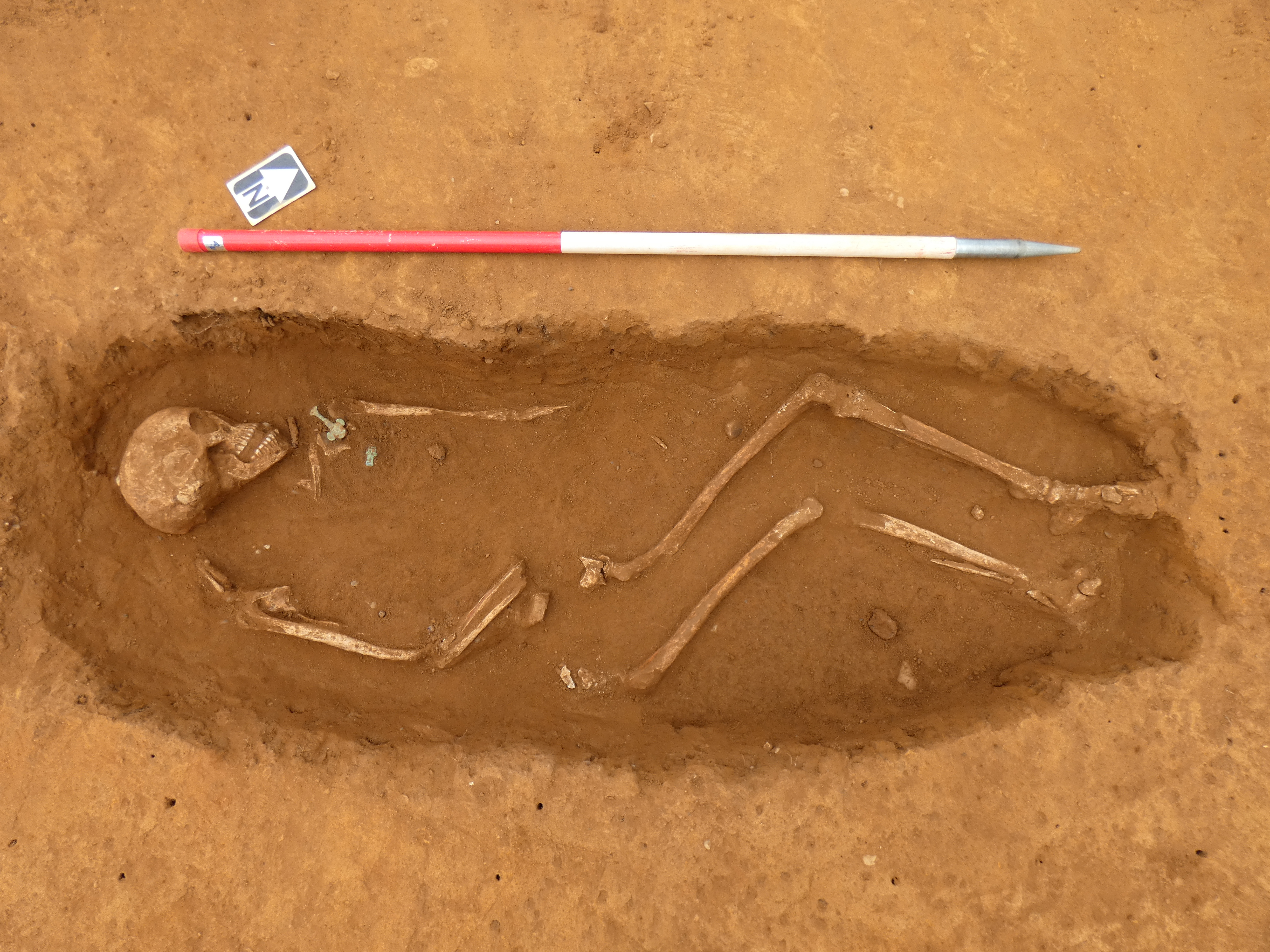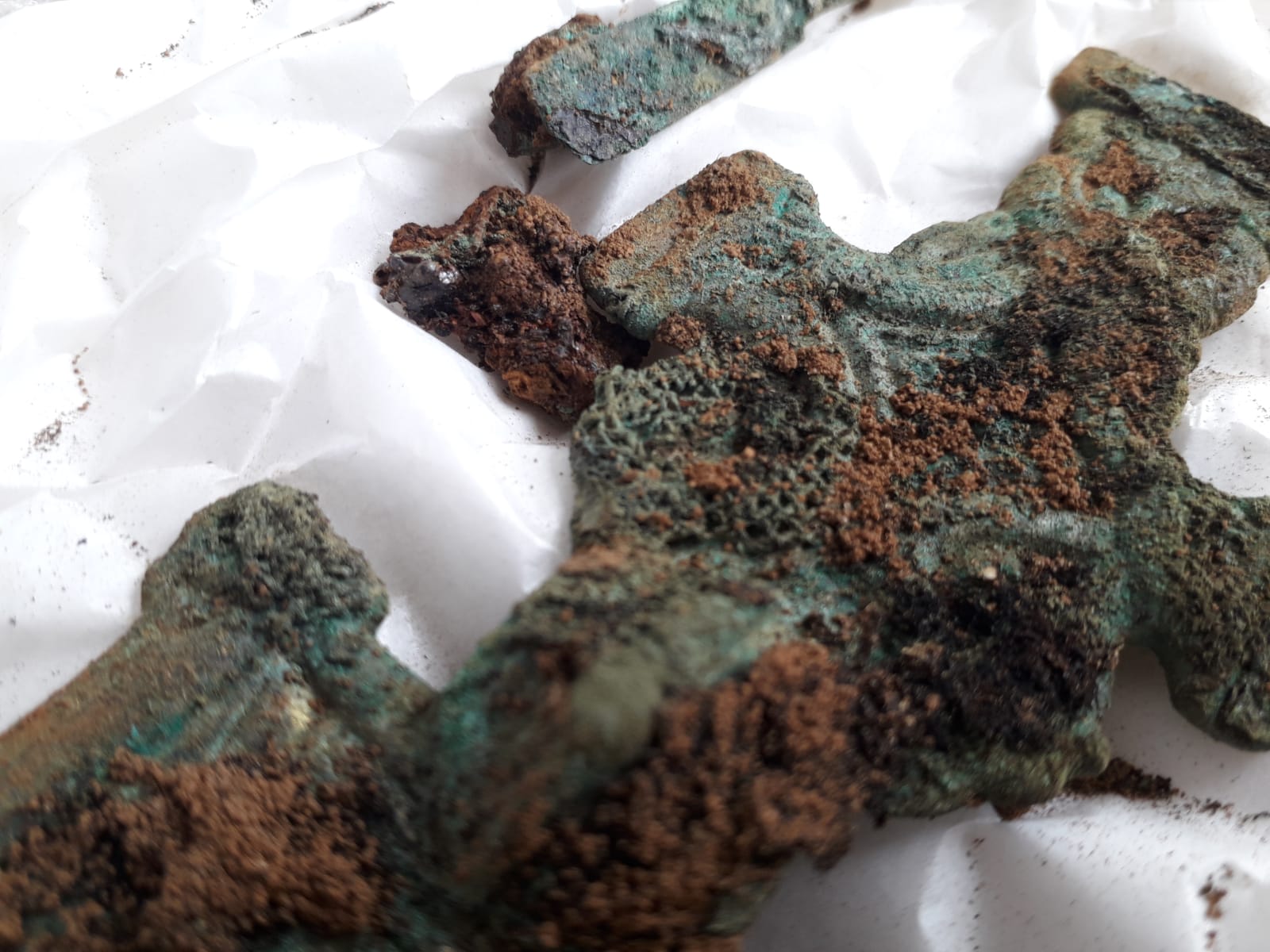Massive Anglo-Saxon cemetery and treasure unearthed in England
Structures dating back to the Bronze Age were also discovered.

A massive Anglo-Saxon burial site has been uncovered in Northamptonshire in the U.K. Nearby, archaeologists also discovered a 4,000-year-old Bronze Age burial site.
The archaeologists uncovered a total of 154 Anglo-Saxon burials, dating back around 1,500 years, holding nearly 3,000 objects, from weapons to jewelry.
A nearby Anglo-Saxon settlement also held 42 structures that were approximately 1,500 years old. The Anglo-Saxon period lasted for about 600 years from about 410 to 1066, when migrants settled in England, so the new discovery would have dated to the early part of that period.
Related: In photos: Rare Anglo-Saxon cemetery uncovered
Older finds at the site included 46 prehistoric burials and seven structures — three burial mounds called barrows and four buildings — dating back to the Bronze Age, which lasted from about 2300 B.C. to 800 B.C. in Britain. The treasure trove of artifacts provides a snapshot of how these ancient people lived and died.
The site was only discovered when several companies began developing a new housing estate near the small village of Overstone. Archaeologists from the Museum of London Archaeology (MOLA) carried out the site excavation, which was funded by the housing companies that bought the land, Barratt and David Wilson Homes.
"The Overstone site contains by far the biggest Anglo-Saxon cemetery ever found in Northamptonshire," project manager Simon Markus, an archaeologist at MOLA, said in a statement. "It is rare to find both an Anglo-Saxon settlement and a cemetery in a single excavation."
Get the world’s most fascinating discoveries delivered straight to your inbox.
The team unearthed approximately 150 brooches, 15 rings, 2,000 beads, 25 spears, 40 knives and 15 shields, as well as personal objects such as cosmetic kits and bone combs. Another noteworthy find was a patch of Anglo-Saxon textiles. Usually, such ancient fabric disintegrates before archaeologists can get to it, but this scrap was mineralized and preserved by a nearby metal brooch.
"The excavations will help us understand the way people lived in both the Anglo-Saxon period, around 1,500 years ago as well as the Bronze Age, nearly 4,000 years ago," Markus said in the statement. "The human remains will tell us about diet, health and even the origins of the people themselves, whilst their buildings can teach us what their day-to-day lives were like and how they utilized the local landscape in these two different periods."
Originally published on Live Science.

Harry is a U.K.-based senior staff writer at Live Science. He studied marine biology at the University of Exeter before training to become a journalist. He covers a wide range of topics including space exploration, planetary science, space weather, climate change, animal behavior and paleontology. His recent work on the solar maximum won "best space submission" at the 2024 Aerospace Media Awards and was shortlisted in the "top scoop" category at the NCTJ Awards for Excellence in 2023. He also writes Live Science's weekly Earth from space series.

